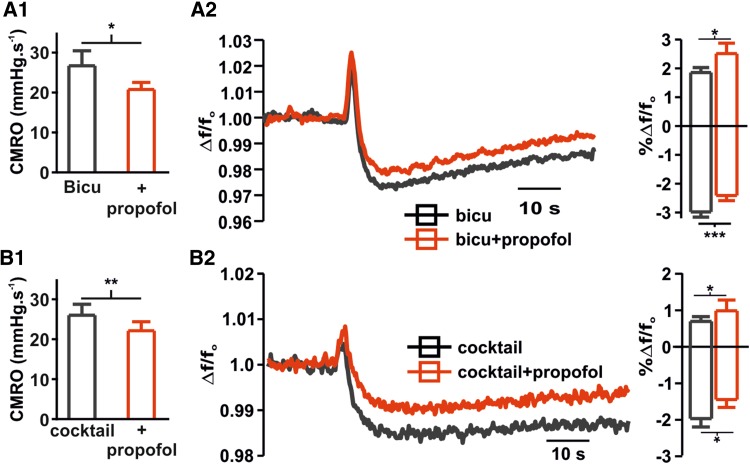Fig. 3.
Propofol-induced changes in CMRO2 and FAD redox state in the absense of GABAergic and glutamatergic transmission. A1, A2 Since propofol is known to act in GABAA-receptors, we checked the effects in CMRO2 and FAD after blockade of GABAergic input onto CA3 pyramidal cells with 10 µM Bicuculline (Bicu, gray). The application of 100 µM propofol decrease CMRO2 and generated an increment of in FAD oxidation (right: average FAD-signal of recorded transient and left plots of changes in peak and undershoot of transients) independently of GABAergic transmission. B1, B2 The absence of GABAergic transmission is related to increase in glutamatergic excitation and epileptiform discharges (not shown). By pharmacological blockade of both, the GABAergic and glutamatergic input onto CA3-neurons we aim to further differentiate a direct effect of propofol on CMRO2 and FAD. Interestingly, 100 µM propofol decreases oxygen consumption and increases FAD-oxidation as well demonstrating a robust effect in neuronal metabolism (right: average FAD-signal of recorded transient and left plots of changes in peak and undershoot of transients). All plots display mean + SEM, significance was tested using paired t tests, n.s. non significant, *< 0.05, **0.01 and ***0.001

